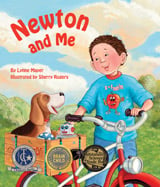Alignment to Standards for DE

| Grade | Number | Standard |
|---|---|---|
| 2 | SC-2.322 | investigate and identify factors that affect balance such as the amount of weight, position of the weight, and position of the fulcrum. |
| 2 | SC-2.325 | demonstrate how pushes or pulls (forces) can change the position, motion, and direction of an object. Explain how the greater the push or pull, the greater the change in position, motion, and direction of an object. |
| 2 | SC-2.326 | recognize that objects can exhibit different kinds of motion such as fast, slow, straight, back and forth, circular, and zigzag and identify the different ways in which a variety of objects (birds, fans, bicycles, baseballs, etc.) move or can be made to m |
| 5 | SC-5.301 | demonstrate that speed is the measure of the distance traveled by a moving object in a given period of time (distance divided by time). |
| 5 | SC-5.302 | use rulers, meter sticks, tapes, and watches to measure the distance objects travel in a given period of time; organize the measurements in tables; and construct graphs based on the measurements. |
| 5 | SC-5.303 | determine whether an object is moving slowly, quickly, or is stopped by collecting and recording data on the distance an object travels in regular time intervals, or how much time it takes for an object to travel a certain distance. |
| 5 | SC-5.304 | demonstrate and explain how the force exerted upon an object can change the objectês motion and speed. |
| 5 | SC-5.305 | predict, measure, and compare how the speed and motion of an object is influenced by the objectês mass, structural design, and material composition. |
| 5 | SC-5.306 | explain how varying the conditions upon which an object moves (flat surface inclined plane smooth surface rough surface) changes the speed of the object. |
| 5 | SC-5.309 | develop appropriate vocabulary to describe the relationship among, distance, time and speed. |